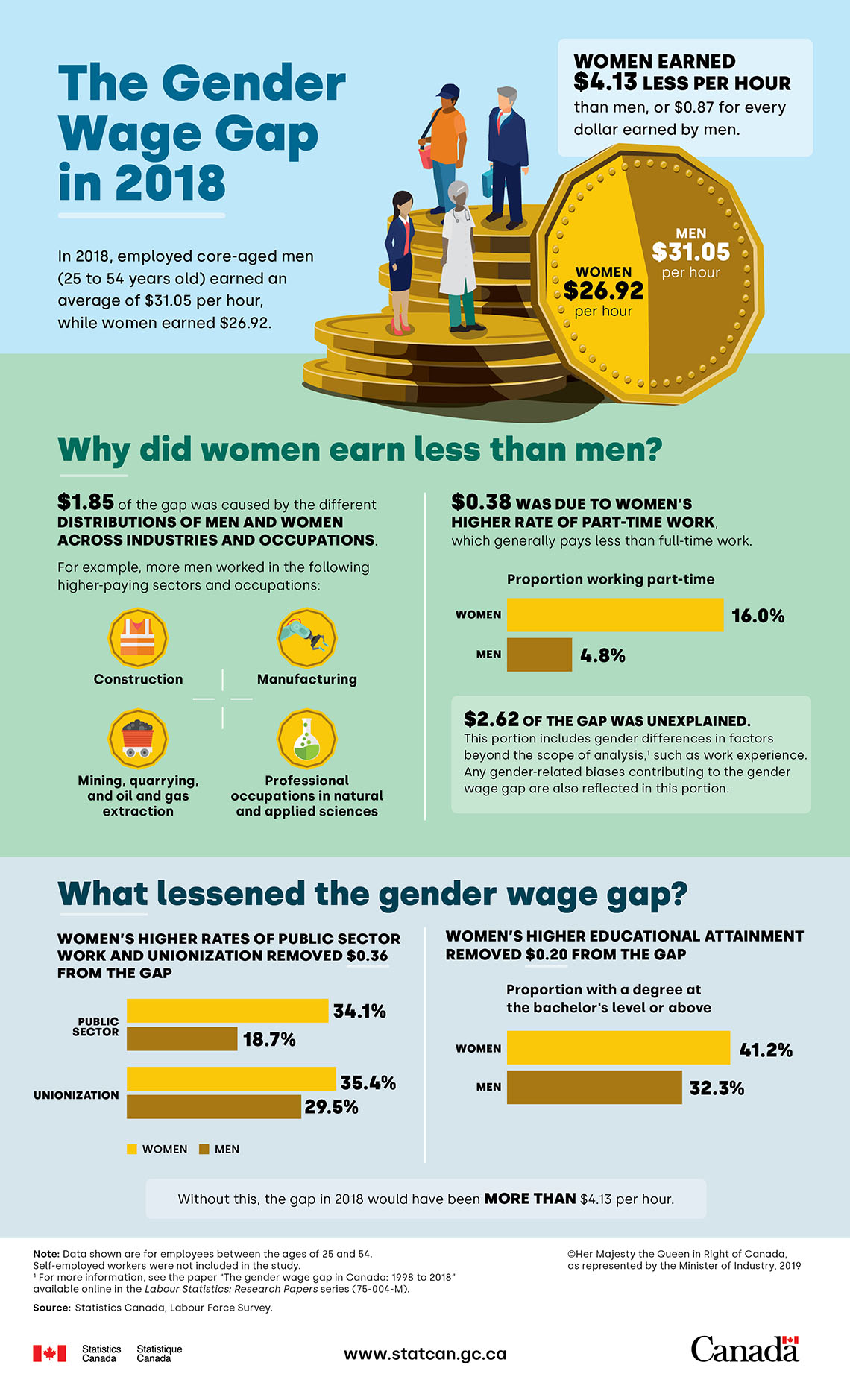The Gender Wage Gap in 2018
Archived Content
Information identified as archived is provided for reference, research or recordkeeping purposes. It is not subject to the Government of Canada Web Standards and has not been altered or updated since it was archived. Please "contact us" to request a format other than those available.

Description: The Gender Wage Gap in 2018
The Gender Wage Gap in 2018
In 2018, employed core-aged men (25 to 54 years old) earned an average of $31.05 per hour, while women earned $26.92.
Women earned $4.13 less per hour than men, or $0.87 for every dollar earned by men.
Why did women earn less than men?
$1.85 of the gap was caused by the different distributions of men and women across industries and occupations.
For example, more men worked in the following higher-paying sectors and occupations:
- Construction
- Manufacturing
- Mining, quarrying, and oil and gas extraction
- Professional occupations in natural and applied sciences
$0.38 was due to women's higher rate of part-time work, which generally pays less than full-time work.
| % | |
|---|---|
| Women | 16.0 |
| Men | 4.8 |
$2.62 of the gap was unexplained. This portion includes gender differences in factors beyond the scope of analysis,Footnote1 such as work experience. Any gender-related biases contributing to the gender wage gap are also reflected in this portion.
What lessened the gender wage gap?
Women's higher rates of public sector work and unionization removed $0.36 from the gap.
| Public sector (%) | Unionization (%) | |
|---|---|---|
| Women | 34.1 | 35.4 |
| Men | 18.7 | 29.5 |
Women's higher educational attainment removed $0.20 from the gap.
| % | |
|---|---|
| Women | 41.2 |
| Men | 32.3 |
Without this, the gap in 2018 would have been more than $4.13 per hour.
Note: Data shown are for employees between the ages of 25 and 54. Self-employed workers were not included in the study.
Source: Statistics Canada, Labour Force Survey.
- Date modified:
